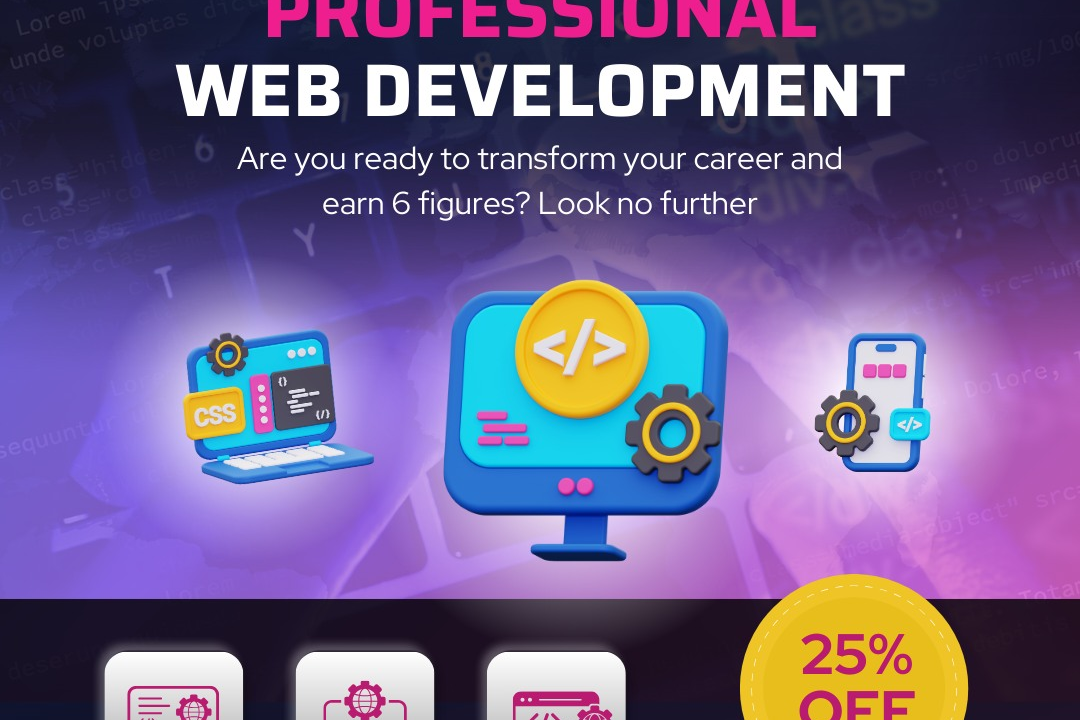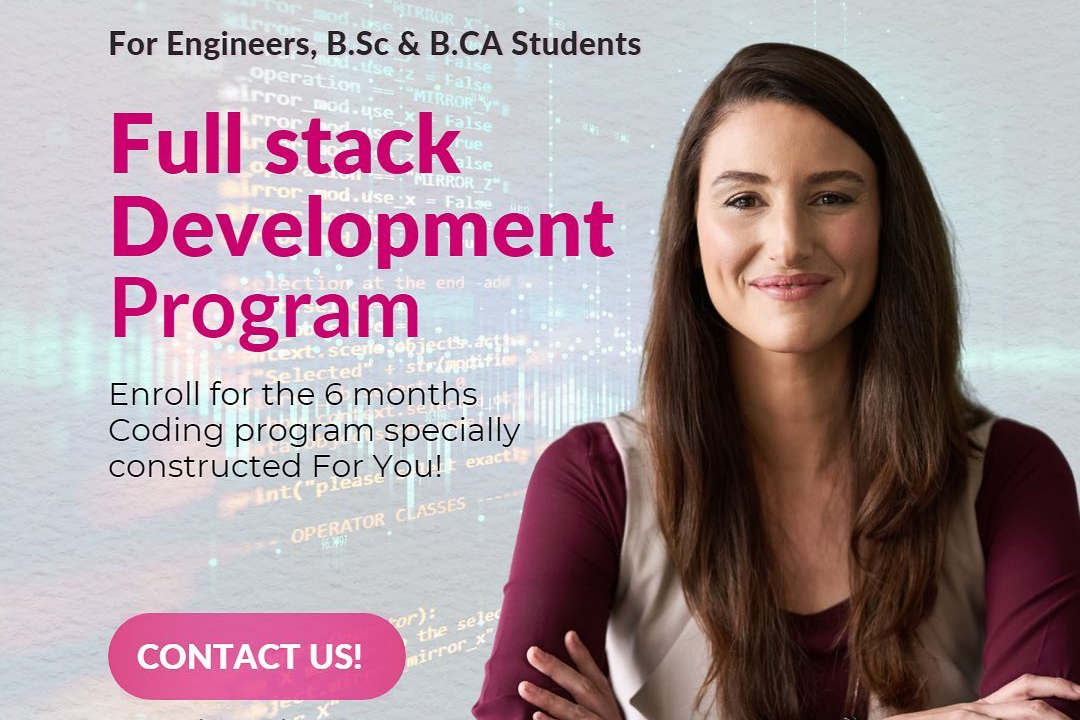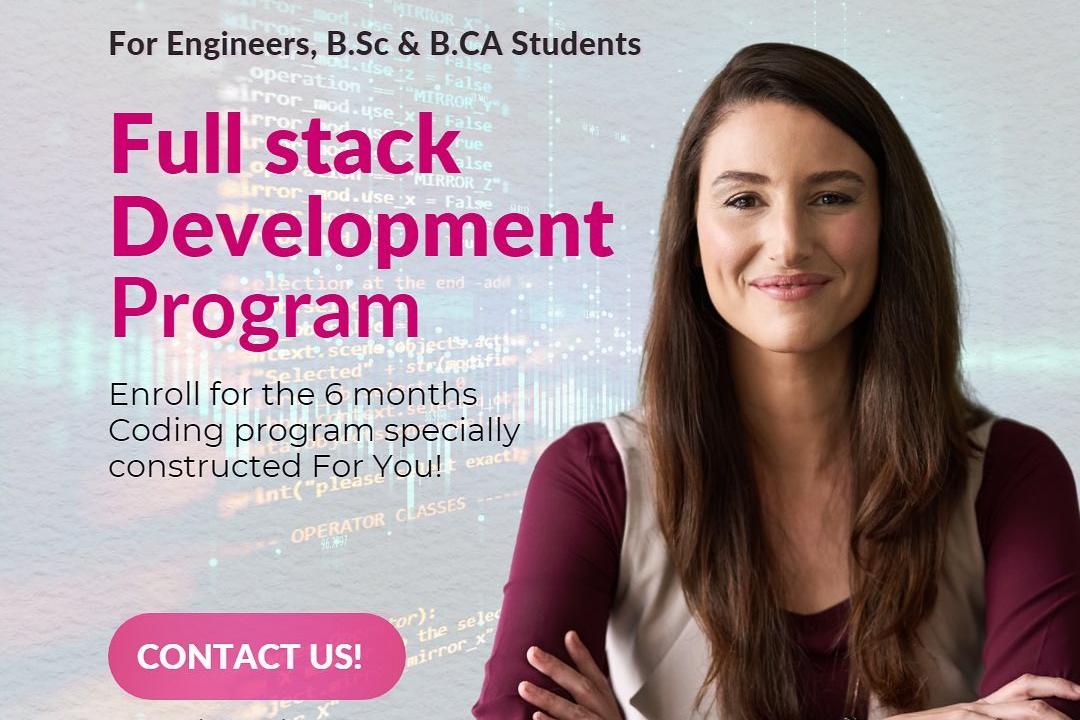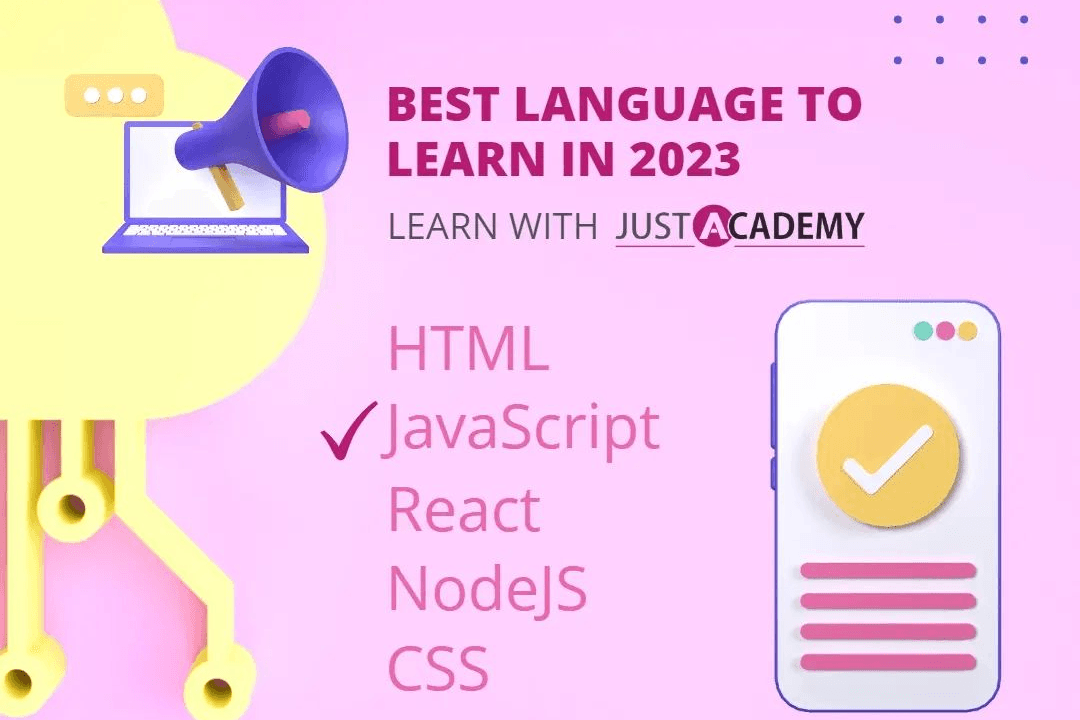Bally Technologies PHP Interview
Preparing for Your PHP Interview at Bally Technologies
Bally Technologies PHP Interview
Bally Technologies, a leader in gaming and technology solutions, often conducts PHP interviews to assess candidates' proficiency in one of the most widely used server-side scripting languages. These interviews are pivotal for identifying skilled developers who can effectively create dynamic web applications and manage database interactions vital for gaming systems. Understanding PHP is crucial in this context, as it allows for the integration of complex features and functionalities that enhance user experiences in gaming products. Gaining insights into the interview process can help aspiring candidates prepare adequately, ensuring they possess the necessary technical skills and problem-solving capabilities demanded by such an innovative company.
To Download Our Brochure: https://www.justacademy.co/download-brochure-for-free
Message us for more information: +91 9987184296
1 - What is PHP?
PHP (Hypertext Preprocessor) is a server side scripting language designed for web development but also used as a general purpose programming language.
2) What are the key features of PHP?
Key features include ease of use, platform independence, support for various databases, and a large community for support.
3) How do you connect to a MySQL database in PHP?
You connect using the `mysqli_connect()` function or the PDO (PHP Data Objects) extension, which provides a more secure and flexible way of connecting to databases.
4) What are the different data types supported in PHP?
PHP supports several data types, including integers, floats, strings, arrays, objects, and booleans.
5) What is the purpose of the `$GLOBALS` array?
The `$GLOBALS` array is a superglobal array in PHP that stores all global variables and allows access to them from any scope.
6) How can you protect your PHP application from SQL injection?
You can protect against SQL injection by using prepared statements with parameter binding and validating all user inputs.
7) What are sessions in PHP?
Sessions are used to store user data across multiple pages. A session can maintain state and store user information in a secure manner.
8) What is the difference between `include` and `require`?
Both are used to include files, but `require` will produce a fatal error if the file is not found, while `include` only produces a warning and the script will continue execution.
9) Explain how to create an array in PHP.
You can create an array using the `array()` function or the shorthand `[]` syntax, allowing for both indexed and associative arrays.
10) What is the purpose of the `isset()` function?
The `isset()` function checks whether a variable is set and is not null, helping to avoid errors when accessing variables that may not exist.
11 - How do you handle errors in PHP?
Errors can be handled using error handling functions like `try`, `catch`, and custom error handlers to manage exceptions more gracefully.
12) What is an associative array?
An associative array is an array that uses named keys that you assign to them, allowing for better organization of data.
13) How can you upload files in PHP?
File uploads are handled through the `$_FILES` superglobal array, which provides access to the uploaded file's information and allows you to move it to a desired directory.
14) What are cookies in PHP?
Cookies are small pieces of data stored on the user's computer by the web browser, helping remember user preferences or sessions.
15) What is the use of `echo` and `print` in PHP?
Both `echo` and `print` are used for outputting data to the screen, with `echo` being marginally faster and capable of outputting multiple strings, while `print` is a function and always returns 1.
These points encapsulate essential PHP concepts and practices crucial for a candidate’s assessment during a PHP interview at Bally Technologies.
16) What are superglobals in PHP?
Superglobals are built in variables in PHP that are always accessible, regardless of the scope. Common examples include `$_GET`, `$_POST`, `$_SESSION`, `$_COOKIE`, and `$_FILES`.
17) How do you define a constant in PHP?
You define a constant using the `define()` function, which allows you to create a constant that cannot be changed once set. For example: `define("SITE_NAME", “JustAcademy”);`.
18) What is the difference between `==` and `===` in PHP?
The `==` operator checks for equality of values, while `===` checks for both value and type equality, making it stricter in comparison.
19) Explain the use of namespaces in PHP.
Namespaces in PHP provide a way to encapsulate items such as classes, functions, and constants, preventing naming conflicts by grouping them into a defined space.
20) What is the use of the `php.ini` file?
The `php.ini` file is the configuration file for PHP, where you can set various directives such as error reporting levels, file upload limits, and time zone settings.
21 - How can you perform error logging in PHP?
Error logging can be performed by configuring the `error_log` directive in `php.ini` to specify where to send errors, or by using the `error_log()` function to send a custom error message to a file or a logging service.
22) What are traits in PHP?
Traits are a mechanism for code reuse in single inheritance languages. They allow you to create methods that can be shared across multiple classes without the need to inherit from a common parent class.
23) How can you implement an abstract class in PHP?
An abstract class in PHP is declared with the `abstract` keyword. It can contain abstract methods (methods without a body) that must be implemented in any derived class.
24) What are interfaces in PHP and how do they differ from abstract classes?
Interfaces define a contract for classes, specifying methods that must be implemented. Unlike abstract classes, interfaces cannot contain any implementation code.
25) Describe the Model View Controller (MVC) architecture.
MVC is a software design pattern used for developing web applications. The Model represents the data, the View presents the data to the user, and the Controller handles user input, coordinating between Model and View.
26) What are PDO and its benefits?
PDO (PHP Data Objects) is a database access layer providing a uniform method of access to multiple databases. Benefits include prepared statements for preventing SQL injection and better error handling.
27) How do you send emails using PHP?
You can send emails in PHP using the `mail()` function, which requires parameters like recipient’s email, subject, message body, and optional headers.
28) What is Composer in PHP?
Composer is a dependency manager for PHP that allows developers to manage libraries and packages required by their projects easily, facilitating autoloading and version management.
29) How do you implement authentication in a PHP application?
Authentication can be implemented using sessions or token based approaches (like JWT). You typically verify user credentials against a database and maintain user sessions securely.
30) What is AJAX, and how can it be used with PHP?
AJAX (Asynchronous JavaScript and XML) allows for asynchronous web requests without reloading the page. PHP can handle the server side processing of those requests, returning data in formats like JSON.
31 - What are errors and exceptions in PHP?
Errors in PHP are runtime issues that occur due to problems in the script. Exceptions are used to handle errors more gracefully, allowing developers to define custom behavior for error handling.
32) Explain the use of the `exit()` function in PHP.
The `exit()` function terminates the current script and can also output a message or status code when invoked.
33) How can you create a secure PHP application?
To secure a PHP application, implement practices such as validating and sanitizing input, using prepared statements for database queries, enforcing HTTPS, and managing user sessions securely.
34) Describe the difference between `GET` and `POST` methods.
The `GET` method appends data to the URL and is suitable for retrieving data, while the `POST` method sends data in the request body, providing more security for sensitive information.
35) What are the best practices for PHP coding?
Best practices include writing clean and maintainable code, following coding standards (like PSR), implementing proper error handling, and using version control systems for tracking changes.
These additional points provide a more comprehensive understanding of PHP, catering to different functional aspects and helping individuals enhance their skill set in web development using this versatile language.
Course Overview
The “Bally Technologies PHP Interview” course offers an extensive overview of essential PHP concepts and best practices tailored specifically for those preparing for technical interviews in the software development field. Designed for both beginners and experienced developers, this course covers a wide range of topics including PHP syntax, object-oriented programming, error handling, and database interactions using PDO. Participants will engage in real-time projects and hands-on coding exercises that simulate common interview scenarios, equipping them with the practical skills and confidence needed to excel in PHP technical assessments. By the end of the course, attendees will have a solid understanding of key PHP principles and will be well-prepared to tackle challenging interview questions effectively.
Course Description
The “Bally Technologies PHP Interview” course is designed to equip aspiring developers with the essential PHP skills needed to excel in technical interviews. This comprehensive program covers crucial topics, including PHP syntax, object-oriented programming, frameworks, error handling, and database management with PDO. Participants will engage in hands-on projects and coding exercises that emulate real-world scenarios, providing practical experience that reinforces learning. By the end of the course, attendees will have gained the confidence and knowledge required to tackle PHP-related interview questions successfully, making them stand out in the competitive job market.
Key Features
1 - Comprehensive Tool Coverage: Provides hands-on training with a range of industry-standard testing tools, including Selenium, JIRA, LoadRunner, and TestRail.
2) Practical Exercises: Features real-world exercises and case studies to apply tools in various testing scenarios.
3) Interactive Learning: Includes interactive sessions with industry experts for personalized feedback and guidance.
4) Detailed Tutorials: Offers extensive tutorials and documentation on tool functionalities and best practices.
5) Advanced Techniques: Covers both fundamental and advanced techniques for using testing tools effectively.
6) Data Visualization: Integrates tools for visualizing test metrics and results, enhancing data interpretation and decision-making.
7) Tool Integration: Teaches how to integrate testing tools into the software development lifecycle for streamlined workflows.
8) Project-Based Learning: Focuses on project-based learning to build practical skills and create a portfolio of completed tasks.
9) Career Support: Provides resources and support for applying learned skills to real-world job scenarios, including resume building and interview preparation.
10) Up-to-Date Content: Ensures that course materials reflect the latest industry standards and tool updates.
Benefits of taking our course
Functional Tools
1 - Laravel
Laravel is one of the most popular PHP frameworks employed in the industry for building modern web applications. The course integrates Laravel to teach students the MVC (Model View Controller) architecture, routing, and templating features. With Laravel's elegant syntax and powerful features, learners will develop robust applications while understanding concepts like middleware, Eloquent ORM, and Blade templating engine. This hands on experience with Laravel not only strengthens their PHP skills but also prepares them to handle real world projects effectively.
2) Symfony
Symfony is another leading PHP framework that students will explore during the course. It is known for its flexibility and reusable components. The course will cover the core features of Symfony, such as Dependency Injection and event handling, enabling students to build scalable applications. Through practical exercises, learners will understand how to implement complex logic while leveraging Symfony's built in tools for database management and templating. This knowledge is instrumental in preparing them for various job roles in web development.
3) Composer
Composer is a dependency manager for PHP that enables developers to manage libraries and packages in their projects seamlessly. The course will introduce students to Composer's functionalities, guiding them on how to use it for installing libraries, managing project dependencies, and autoloading classes. By mastering Composer, students will streamline their development processes, enhancing productivity and ensuring that their applications remain up to date with the latest libraries.
4) MySQL
MySQL is a widely used relational database management system that plays a crucial role in PHP development. The course provides intensive training on MySQL, covering topics like database design, SQL queries, and data manipulation. Students will create and manage databases, ensuring they can efficiently handle data for their web applications. The practical experience gained with MySQL equips students to understand the backend of web development and the importance of database interactions.
5) PHPUnit
Testing is a critical aspect of software development, and the course introduces PHPUnit, a popular testing framework for PHP. Students will learn how to write, execute, and manage unit tests, ensuring the reliability of their code. By utilizing PHPUnit, they can adopt best practices in writing testable code and verify that individual components of applications function as intended. This focus on testing cultivates a disciplined approach to development, which is highly sought after by employers in the industry.
6) XAMPP
XAMPP is a lightweight, fast, and easy to install Apache distribution containing MySQL, PHP, and Perl. The course familiarizes students with XAMPP as a local development environment, allowing them to run their PHP applications on their machines effortlessly. By using XAMPP, learners will understand how to set up a full featured web server on their local machines, enabling them to test and deploy projects without external hosting. This setup is crucial for developing and debugging applications effectively as students embark on their career paths.
7) RESTful API Development
Understanding how to build and consume RESTful APIs is essential in modern web development. This course dives into the principles of REST and guides students through creating their own APIs using PHP. They will learn how to handle HTTP requests and responses, utilize JSON for data interchange, and secure their APIs with authentication methods. By mastering API development, students will be prepared to integrate their applications with various front end frameworks and third party services.
8) Version Control with Git
The course emphasizes the importance of version control in collaborative projects. Students will learn how to use Git, an essential tool in software development for tracking changes in code and collaborating with peers. They will cover fundamental commands, branching strategies, and hosting repositories on platforms like GitHub. A sound understanding of version control will enhance their teamwork skills and improve their development workflow, making them valuable assets in any development team.
9) Framework Comparisons
A significant part of the course involves comparing different PHP frameworks, including Laravel and Symfony, to help students understand their strengths and weaknesses. This comparison equips learners with the critical thinking skills necessary to choose the right framework based on project requirements, application size, and performance needs. By evaluating real world use cases, students can better appreciate the versatility and applicability of each framework.
10) Deployment and Hosting
Once an application is developed, students must learn how to deploy it to live servers. The course includes modules on deployment strategies, web hosting options, and server configuration. Students will gain insights into popular hosting environments, such as shared hosting, VPS, and cloud services. This knowledge ensures that they not only develop applications but also understand the processes of releasing and maintaining applications in production environments.
11 - Error Handling and Debugging
An effective developer must know how to handle errors and debug their applications efficiently. This course teaches students various error handling techniques, logging practices, and debugging tools integrated within PHP and common IDEs. Students will develop skills to identify issues quickly, understand stack traces, and write clean, readable code that anticipates potential failures. This competence makes them adept at maintaining high quality applications.
12) Working with Front End Technologies
Integration between back end and front end technologies is a crucial part of web development. The course will introduce students to essential front end technologies such as HTML, CSS, and JavaScript, demonstrating how to create dynamic user interfaces that communicate with the PHP back end. By learning to work on both sides of the stack, students will enhance their overall proficiency as full stack developers, making them more versatile in the job market.
13) Real Time Project Development
The hallmark of the JustAcademy certification program is the hands on project experience. Throughout the course, students will work on real time projects that simulate actual industry scenarios. These projects will require them to apply the concepts learned, such as database integration, RESTful API creation, and error handling techniques. By the end of the course, learners will have a portfolio of completed projects to showcase their skills to potential employers.
14) Soft Skills and Career Preparation
In addition to technical expertise, students will receive training focused on soft skills that are vital for career success. Topics such as effective communication, teamwork, and problem solving will be integrated into the course curriculum. Furthermore, career guidance sessions will aid students in preparing for interviews, improving their resumes, and understanding industry expectations. This holistic approach ensures that they are well rounded candidates ready to enter the workforce.
15) Continuous Learning and Resources
The tech industry is ever evolving, and staying updated with the latest trends is critical. The course will emphasize the importance of continuous learning, providing students with resources to further their education post certification. Recommendations for online forums, documentation, and advanced topics will help learners remain engaged with the community and keep their skills sharp in a rapidly changing landscape.
These additional points reinforce a comprehensive approach to learning PHP and web development through JustAcademy, equipping students with both technical savvy and professional acumen.
Browse our course links : https://www.justacademy.co/all-courses
To Join our FREE DEMO Session:
This information is sourced from JustAcademy
Contact Info:
Roshan Chaturvedi
Message us on Whatsapp:
Email id: info@justacademy.co
Agile Methodology In Mobile Development











